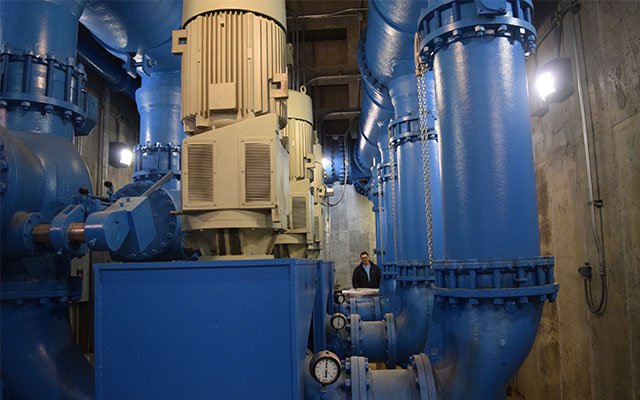Variable Frequency Drives vs Eddy Current Drives
Authors: Gary Garson, Vice President of Engineering at DSI/Dynamatic, and Gary Patterson, Pump, Fan, and Compressor Technical Specialist at DSI/Dynamatic
A fully informed variable speed drive specification is not limited to a pump system’s energy usage costs, but also encompasses initial capital costs and ongoing ownership costs. Return on investment cannot be properly measured without the inclusion of these three cost variables. For the sake of this article, let’s focus on capital costs when considering drive options for variable speed applications.
Capital costs include application engineering, product procurement, system installation and commissioning. For VFD installations, costs can mount in each of these areas due to system complexity and required ancillary components, such as for controlled harmonics and drive system air conditioning. Even so, for many smaller horsepower pumping applications, VFD capital costs will be highly competitive and possibly lower than electromagnetic, eddy-current drives.
It is among the larger horsepower pumping applications, beginning around 100 HP, where eddy-current drives offer capital cost savings compared to VFDs. Substantially higher capital cost savings can be achieved in medium voltage applications (2300 volts AC to 4160 volts AC), where the cost of an eddy-current drive can range up to 65% less than the cost of a variable frequency drive. This can mean an outset savings of hundreds of thousands of dollars, and possibly millions, on the purchase of larger drive systems.
Electromagnetic eddy-current drives can, for certain applications, be a more cost-efficient method of variable speed pump control – especially when you consider the capital costs that are often overlooked when selecting variable frequency drives (VFDs).
Capital costs which are often overlooked include:
Air conditioning – Very often VFDs are required to either have air conditioning cabinets or are typically placed in air conditioned, temperature-controlled rooms. Air conditioning creates a capital cost that is often not attributed to the initial cost of the VFD – but it ought to be – because if not for the VFD, the location would likely not be air conditioned. VFDs commonly require owners to install air conditioning where it otherwise is not needed. In some cases, installing a VFD may require modification to an existing building to make adequate room for the VFD to have the required amount of cooling air. In other cases, locations are isolated in a plant to ensure proper cooling. For example, you would not expect to find an air conditioned operation in a steel mill, but there are locations within steel mills where walls have been erected to isolate a control room in order to keep the VFD sufficiently cooled. On the other hand, Eddy current drives do not require additional air conditioning. From a plant floor installation standpoint, electromagnetic variable speed drives can be significantly smaller than comparable horsepower, medium voltage VFDs, taking up considerably less space.
Inverter duty motors – Another potential capital cost that is sometimes overlooked when considering drive options is the possible need to buy an inverter duty motor – which often is a higher cost than a standard motor.
Bypass starters – Very frequently, owners and operators insist on installing bypass starters. Bypass starters are typically installed for redundancy, to ensure the owner / operator will have the ability to operate the motor without the VFD – anticipating the VFD will someday fail. Bypass starters offer a “back-up” solution in case VFDs cannot be used in the pumping system. The cost of these components also need to be taken into consideration when looking at drive options.
Harmonic filters – Since the 1970s, owners / operators have experienced issues with power system harmonics. All VFDs produce some degree of harmonic distortion to the electrical system, which, depending on where it is and how severe it is, can cause significant damage to control systems and other sensitive electrical components connected to the system. IEEE 519, which is intended to limit the negative impact of non-linear power system loads, is a standard that sets recommended guidelines for power system harmonics. So in some cases where a VFD is chosen for an application, additional components need to be added for harmonic mitigation. On the other hand, there are eddy current drives available to the market where this technology does not produce any appreciable harmonics; thereby meeting the IEEE 519 standards and requiring no additional equipment for mitigating current and voltage harmonics.
Many pumping system owners and operators are discovering they have options when it comes to modern pump-drive system solutions. In addition to variable frequency drives (VFDs), electromagnetic eddy-current drives are proven for their durability, reliability and longevity. Depending on the application, these drives can be the most cost efficient choice – as long as specifications are based on a complete examination of costs.
To learn more about total cost of ownership, read Efficiency, Life Cycle Cost, and the Eddy Current Drive.





Comments